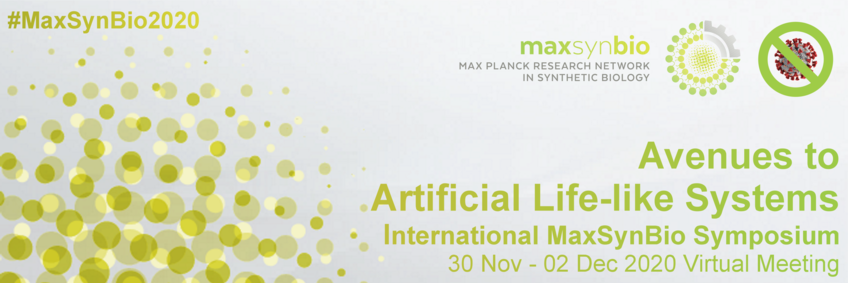
#04 - Functional and Morphological Adaptation in DNA Protocells via Downstream Signal Propagation
Avik Samanta (University of Freiburg)
Tuesday, 01 Dec 21:15 - 22:00 CET
Access to the BigBlueButton rooom for this Mini Talk via the lists for Monday and Tuesday.
Please make yourself familiar with BigBlueButton before you join the Mini Talk - read the instructions.
Abstract
Title: Functional and Morphological Adaptation in DNA Protocells via Downstream Signal Propagation
Author(s): Avik Samantaa
Affiliations: aUniversity of Freiburg
Abstract: The bottom-up approach in engineering artificial-protocells (PC) exhibiting dynamical behaviors and systems-based properties are emerging challenges in the field of synthetic biology [1]. The fundamental cellular processes (differentiation and morphogenesis) stem from numerous interwoven biochemical reaction pathways that instigate the physical changes in the periplasm. The capability to mimic elementary aspects of these non-equilibrium processes in protocells could pave the way towards designing life-like systems orchestrating complex spatiotemporal transformations. We unraveled a polymer-like phase-separation behavior in multiblock single-stranded DNA by triggering a nucleobase-specific lower critical solution temperature, which provides an opportunity to fabricate all-DNA hierarchical structuration with several encoded sequences for post-functionalization [2]. On the other hand, artificial metalloenzymes (ArMs) [3] emerge from anchoring an organometallic moiety within a macromolecular scaffold, and the resulting hybrid catalyst amalgamates attractive features of both homogeneous catalysts and enzymes. We used a family of genetically modified streptavidin as anchors in the PC-core to immobilize a Ru-based metathesis catalyst and performed a ring-closing metathesis to investigate the crowding effect of the environment on catalytic efficiency and stability [4]. We have also succeeded to uncage a DNA intercalating fluorophore in the course of metathesis, which eventually triggers the dynamization of the shell, resulting in morphological transformations of the PCs. Even though cross-disciplinary approaches to explore the design, structure, function, and evolutionary potential of metabolic PC with genetically evolved proteinaceous catalysts are in their early stages, our approach offers valuable insights into the achievement of chemically triggered adaptive behavior of prebiotic coacervates and towards a minimalistic design of life-like abiotic systems.
References